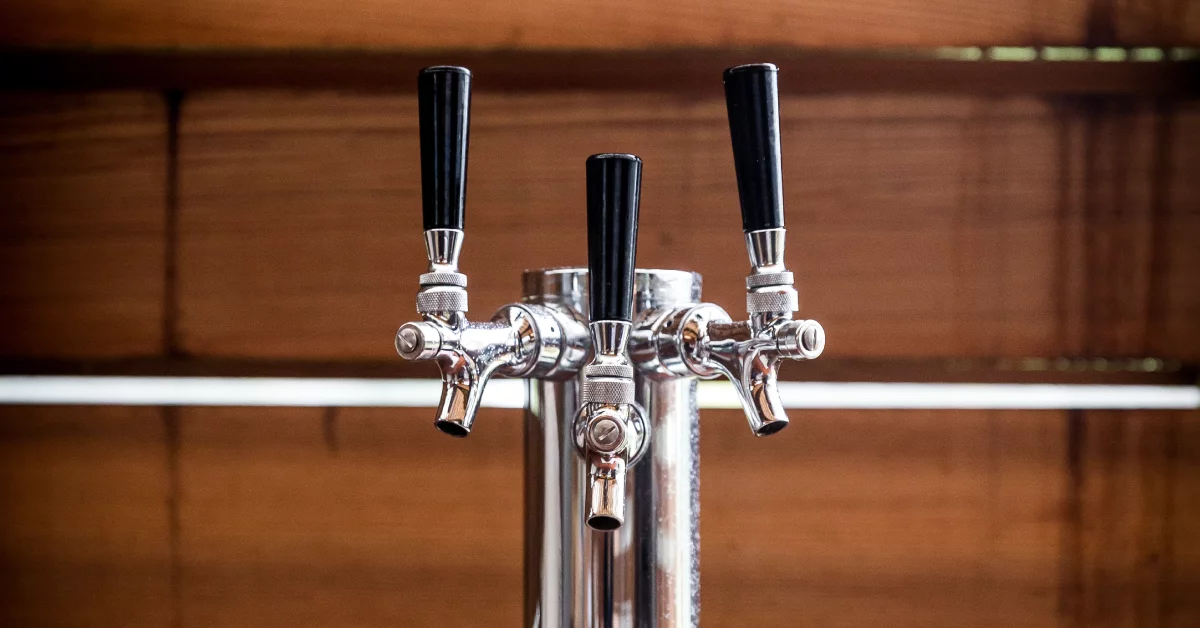A Guide to Kegging Beer
Bottling may be the cheaper method for packaging your beer, but it can be time-consuming, inconsistent and messy. That’s why many homebrewers prefer to keg their beer! In this article, we look at how to keg beer and how to carbonate beer in a keg.
Why keg?
Bottling is relatively easy and cheap and doesn’t require too much equipment, but a 23 L (6 US Gal) batch involves quite a bit of work. You’ve got to clean and sanitise around 40 individual bottles, prepare priming solution, transfer your beer into a second clean and sanitised bottling bucket and syphon into each bottle… That’s why, for many brewers, it is worth investing in a good kegging setup to not have to worry about bottling day.
When it comes to kegging you will require:
- A keg
- CO2 bottle and regulator
- A gas-in connector
- A liquid-out connector
- A cleaner/sanitiser
How to keg
- Begin by pouring hot water into your keg then add a good amount of cleaner. Place the lid on the keg and add a small amount of CO2 to seal.
- Shake the keg thoroughly to soak all of the inner surfaces in cleaner solution. Then, leave the keg to stand for ten minutes.
- After ten minutes shake the keg thoroughly again before running some of the cleaner solution out of the liquid-out line.
- Release the pressure on your keg. Then, take the lid off to pour what is left of the cleaner out of the keg.
- Fill with hot water and pressurise again before shaking and running the water out of the liquid-out line.
- Then, make a sanitiser solution before pressurising the keg once more and shaking.
- Allow the keg to soak in sanitiser solution before shaking up and running some sanitiser solution out of the liquid-out line.
- Tip what is left of the sanitiser out of the keg.
- When the keg is clean and sanitised, transfer your beer from the fermenter to the keg using a clean and sanitary syphon. Then clip the lid on.
How to tap a keg
Take your Grey (G=Gas) ball lock disconnect that is connected to your gas and regulator and connect it to the post with the notch on your keg. This is done by lifting the collar at the bottom of the disconnect and pushing it down onto the post.

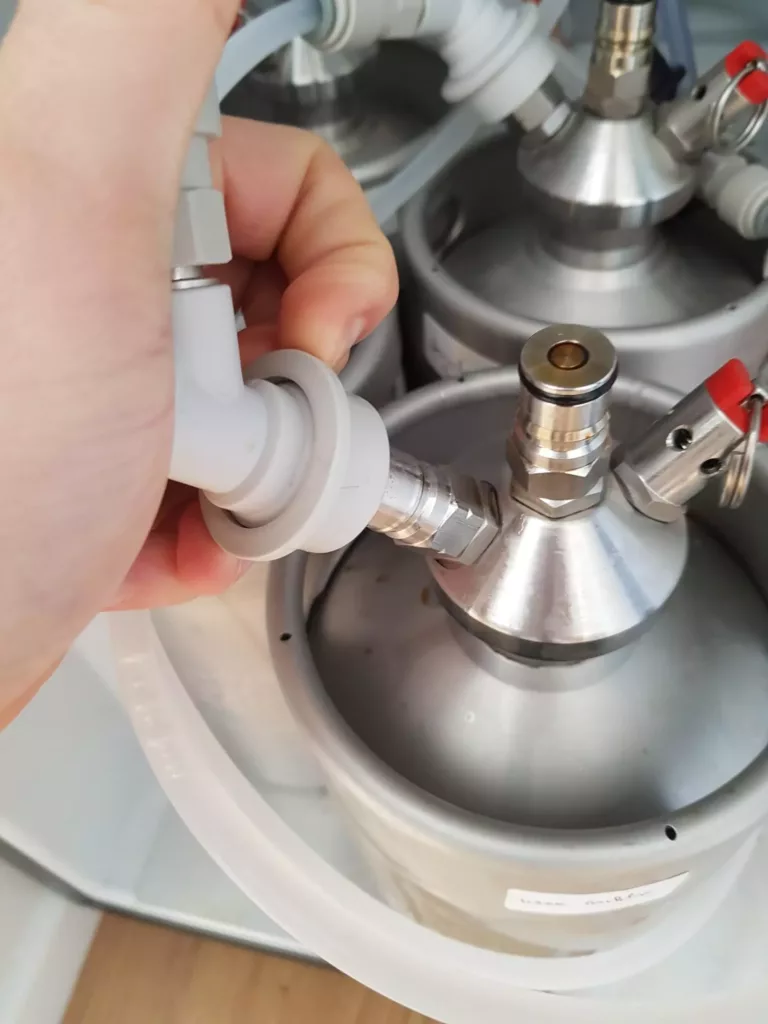
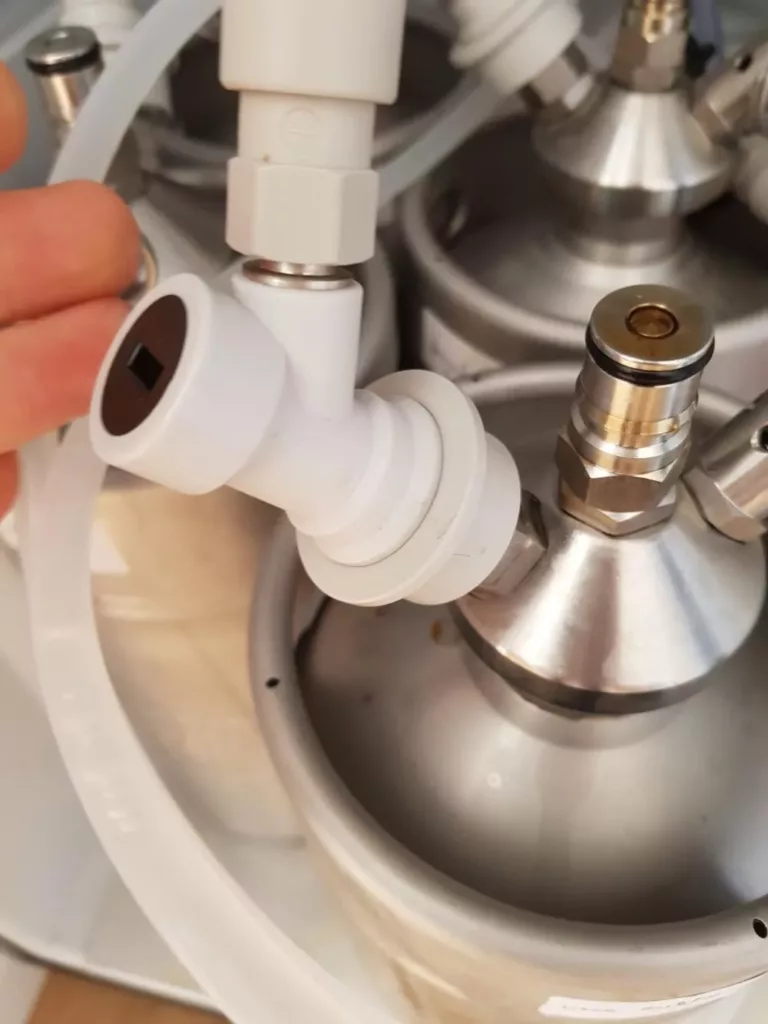
Then take the Black ( B= Beer) ball lock disconnect that is attached to your tap and connect it to the non-notched post on your keg. This is done by lifting the collar at the bottom of the disconnect and pushing it down onto the post.
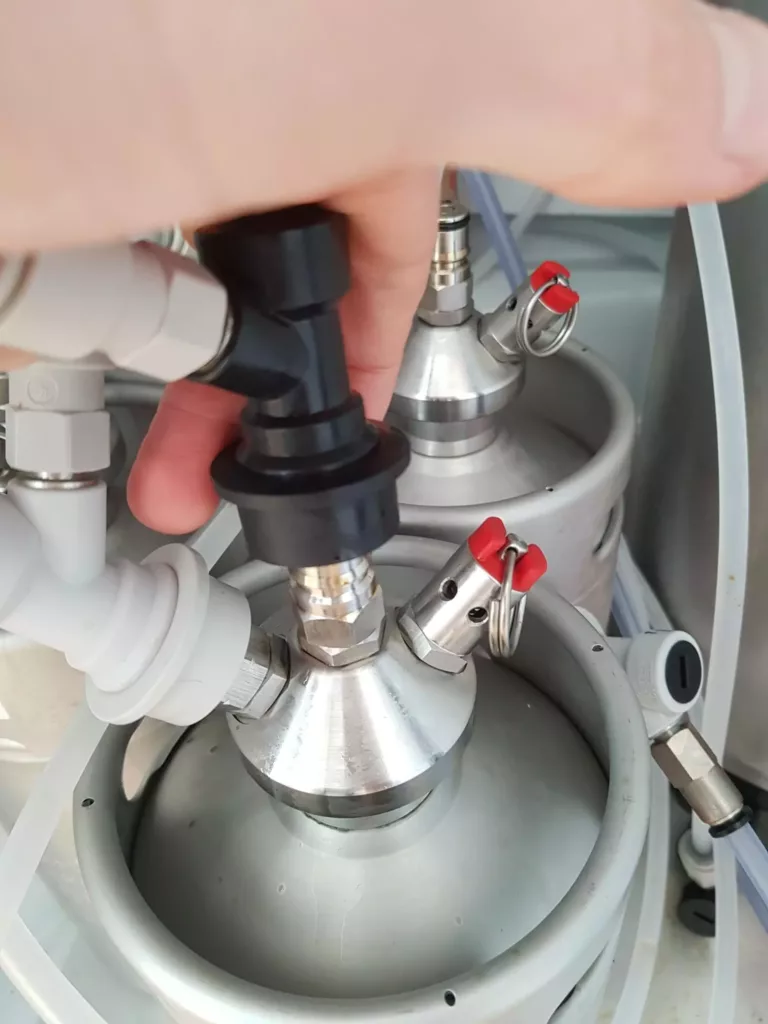

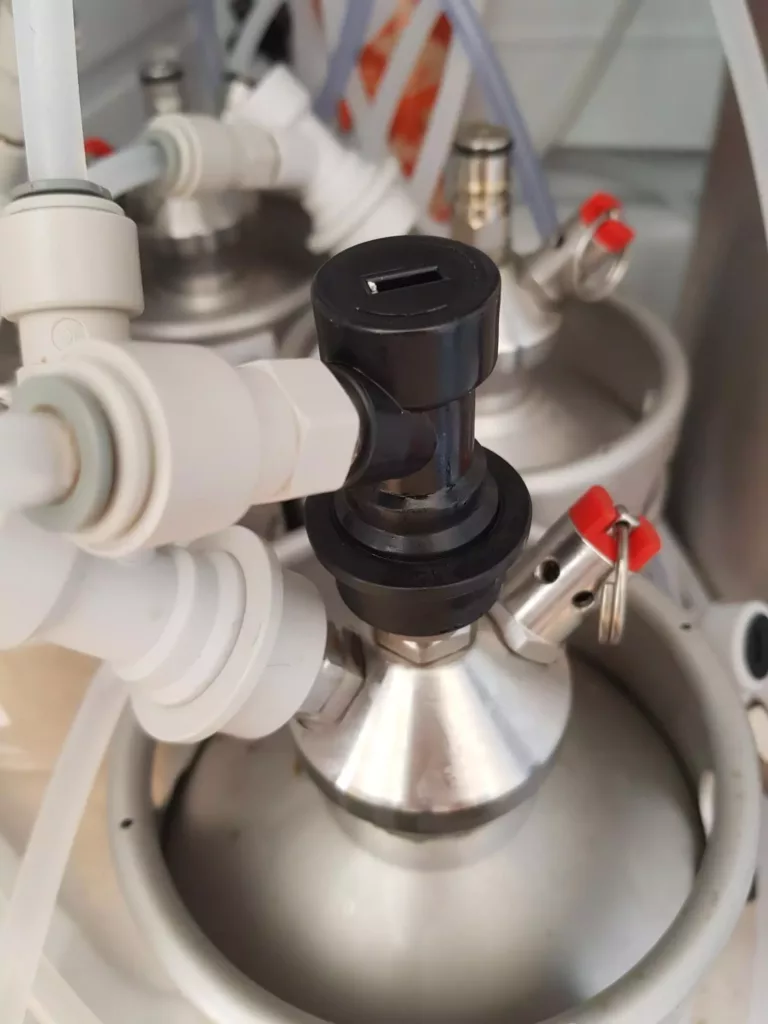
Changing a keg
This is very similar to the above. Remove the disconects by lifting the collar at the bottom of the disconnect and pulling up. Now connect the new keg using the same taping method as above.
How to carbonate beer in a keg
Kegging certainly makes a brewer’s life easier with only one ‘large bottle’ to clean and fill! However, things can become a little complicated when it comes to carbonating beer in a keg. Just like the brewing process, there is more than one way to do this.
The most popular way to carbonate beer in a keg is using CO2 to force bubbles into the beer and using the same CO2 source to serve the beer through a tap. This form of carbonation depends on the pressure of CO2 applied and the temperature the beer is at.
You can ‘naturally’ carbonate a keg just like you would with bottle carbonation or conditioning. The amount of sugar you will use in a keg depends on similar factors like the volume of beer and the level of carbonation needed. You will also need to also keep it at the same temperature fermentation was done at until carbonated (typically 1-14 days).
Carbonation methods can and will differ depending on beer styles and serving temperatures. Different styles have different carbonation levels and serving temperatures which best showcase the flavour of the beer style.
Top tip: To calculate the amount of sugar needed, check out the kegging carbonation calculator on the Grainfather app.
Here are some quick kegging methods to get you started:
Set and forget method
This is by far the most recommended method of carbonating your beer. It is the easiest method with the least effort required. There is also much less chance of encountering issues like over carbonation or having beer shoot back up your gas line as you connect a new keg. This method takes a week or so to get there, but is still quicker than sugar-based carbonation!
This method requires a balanced kegging system. A balanced system is the set relationship between the length and inner diameter of the beer line, the refrigeration temperature and the PSI of CO2 applied. For most store-bought kegerators this is already decided and set up for you. If you are building your own then there are online calculators to help you figure this out.
Then it is as simple as connecting the CO2 to the keg and letting it sit for a week or so. It will generally carbonate to the correct level and be able to be dispensed at the pressure you have your kegging system normally set to. This is typically 8-12psi but we advise to check your kegerator instructions.
Medium-speed method
This method is quicker than the set and forget method. Hook up your gas to the chilled-down keg and set the regulator to about 30psi for two days. After this time, wind back your regulator to your normal serving pressure. Then, after a couple more days, it should be at typical carbonation levels.
The initial high PSI forces more CO2 into the beer. The period of normal PSI allows the system to equalize before serving, so you don’t have beer shooting across the room from the tap.
Quickest method
This method is extremely quick – hey, you can be drinking the same day! – but also comes with the highest amount of risk of over-carbonation.
This method requires a chilled down keg and setting your regulator to approx. 40psi. Once this is done, you gently shake the keg from side to side (some roll the keg on the floor) for approx. 50 seconds. You will hear the hiss of the gas going into the keg from the bottle.
Some brewers will also connect the gas to the beer out connect (using the appropriate disconnect) which will force the CO2 through the beer from the bottom of the keg. This can aid in carbonation but is not strictly required.
After this amount of time, let the keg rest for 10 or so minutes. Then vent the keg to expel the built-up CO2 and serve some to see the carbonation level.
You may need to do it again or depending on your set-up it may in fact have over-carbonated – as we have said this is the riskiest way of carbonating.
This method will likely need some test and adjusting to your system to get it right. Be patient if using this method!
Reading the CO2 Regulator
A CO2 regulator is designed to give you more control of the pressure of the gas coming from the tank into your keg.
When you look at the regulator you will see two gauges, one on top and one to the side. The gauge on top of the regulator reads the ‘adjustable pressure’ which you can set by turning the screw in the middle of the regulator. Tightening the screw increases the pressure.
The gauge on the side of the regulator reads the pressure from the CO2 tank. You will likely find that this stays quite steady until the tank starts to run out of gas – at which point it will rapidly drop.
Over-carbonated kegs
If you have inadvertently over-carbonated a keg, all is not lost! It can be, however, a timely exercise to fix it up.
The easiest way to do this is to vent all CO2 from the keg and then shake the keg to expel the CO2 from the solution. Once done, let the keg sit for at least ten minutes before venting the built-up CO2 again. Letting your keg sit is important as you’re likely to have beer and beer foam everywhere if you don’t do this.
Then, test the carbonation level again – by tasting, naturally – and continue to your desired level.
A final note on carbonating in a keg
As you have learned, there are different methods for carbonating beer in a keg. All have several variables to factor in to ensure it is done correctly.
Most major factors have been mentioned such as beer carbonation style levels, balanced kegging systems, temperature and CO2 levels. It is not always a quick and simple solution so the best way is to brew lots of beer and test it all out!
However, as mentioned from the start, the easiest and less-risky method is by far the set and forget method.
This is just our technique for kegging and many brewers will have developed their own tips and tricks, what is your preferred method?
If you’re new to brewing and are looking to up your knowledge, check out the rest of our Brewing 101 articles. Leave a comment below or contact us on [email protected] if you have any questions. We’re happy to help!
